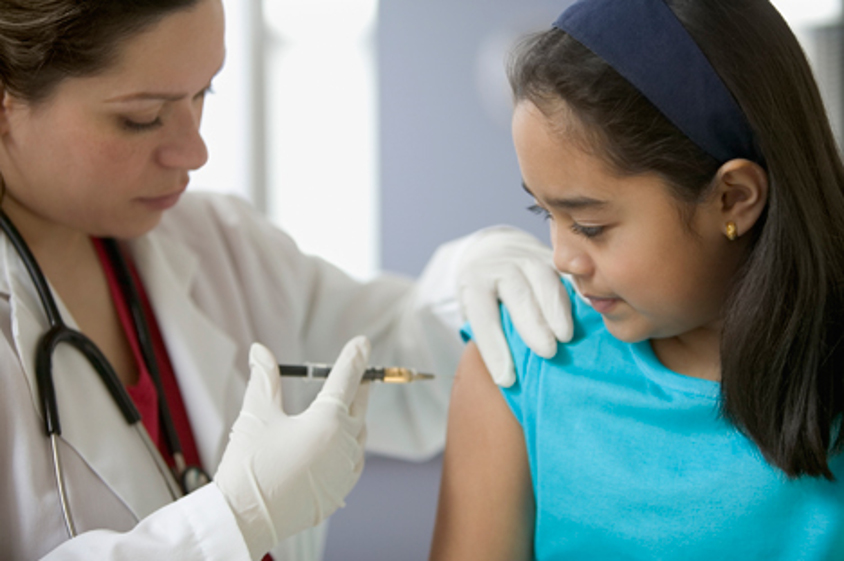HHC Adolescent Vaccination Rate For HPV Far Exceeds National Average For Both Genders
For Adolescent Boys at HHC, HPV Vaccination Rates More Than Triple National Level January is "Cervical Cancer Awareness Month"
Jan 08, 2015

Dr. Ram Raju, President of the New York City Health and Hospitals Corporation (HHC), announced today that vaccination coverage for Human Papillomavirus (HPV) among adolescent patients at HHC surpasses the national average for both boys and girls, with male adolescents at HHC being over three times more likely to receive the full vaccine than their peers nationally. HHC has been a leader since the vaccine’s introduction in promoting the HPV vaccine as protection against cervical cancer and other conditions, and in 2013 performed over 115,000 Pap tests to screen patients for cervical cancer.
“HHC is committed to making the HPV vaccine available to its patients regardless of ability to pay, immigration status, or any other potential barrier,” said Dr. Raju. “The prevention of life-threatening disease through a safe and highly effective vaccine helps HHC better manage population health in New York City and is an extremely efficient use of health care resources. But most importantly it saves lives. Tens of thousands of New Yorkers can potentially avoid cancer through this vaccination.”
Among patients who made at least one pediatric visit to HHC in 2013, 50.1 percent of females ages 13-17 had received the full three-dose vaccine against HPV; for male patients ages 13-17, 44.5 percent had received the full vaccine. Those figures increased in the first three quarters of 2014, when 52.4 percent of females and 52.5 percent of males ages 13-17 who visited HHC completed the vaccine.
Citywide in 2013, according to the Citywide Immunization Registry, HPV vaccine coverage for adolescents exceeded the national average, with 42 percent of females and 27 percent of males ages 13-17 having received all three parts of the vaccine.
Nationally in 2013, only 37.6 percent of females and 13.9 percent of males ages 13-17 had received the full vaccine. Nationwide statistics are from the federal Centers for Disease Control and Prevention (CDC).
HHC makes the HPV vaccine a regular part of pediatric care and routinely offers the vaccine to patients when they see their doctor at ages 11 or 12. Older children, adolescents, and young adults up to age 26 who have not previously had it are also encouraged to receive the vaccine.
The vaccine is administered in a series of three injections over a six month period. To encourage completion of the vaccine cycle, patients at HHC who receive the first part of the vaccine are given an appointment on the spot to come back two months later for the second injection. Patients receive reminder phone calls prior to their appointments, and are phoned again if they miss it.
According to the CDC, genital HPV is the most common sexually transmitted infection, and is a frequent cause of genital warts and other conditions including cancer of the cervix, throat, vulva, vagina, penis and anus. There are more than 40 HPV types that can infect the genital areas of males and females, as well as the mouth and throat. The CDC estimates that about 79 million Americans are currently infected with HPV and about 14 million people become newly infected each year. The HPV vaccine has been shown to prevent certain types of HPV infection which account for up to 70 percent of cervical cancers, and other diseases.
HPV is spread through genital contact, most often during vaginal and anal sex. HPV may also be passed on during oral sex and genital-to-genital contact. HPV can be passed on between straight and same-sex partners, even when the infected partner has no signs or symptoms. Most infected persons do not realize they are infected. It is also possible for a pregnant woman with genital HPV can pass HPV to her baby during delivery.
Some people discover they have HPV when they get genital warts. Women may find out they have HPV when they get an abnormal Pap test result during cervical cancer screening. Others may only find out once they’ve developed more serious problems from HPV, such as cancers. Symptoms may not develop until years after exposure, and some infected people will experience no symptoms at all.
According to the CDC, about 360,000 people in the United States get genital warts each year and more than 10,000 women get cervical cancer.
Contact or visit an HHC facility convenient to you for more information or to make an appointment for a vaccine or cancer screening.